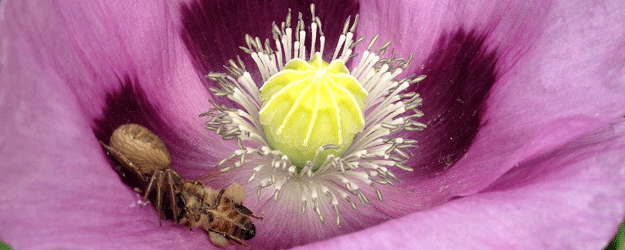A new garden of medicinal plants featuring one of the oldest printed herbals with illustrations
Medicinal plants are one of the most important topics to be addressed by botanic gardens. Throughout all sections of society, people are interested to learn which plants can be used in traditional medicine or are currently investigated for their pharmaceutical potential. Health matters to all of us, and this gives botanic gardens the opportunity to communicate various important issues related to medicinal plants and to raise awareness of the values of biodiversity.
Introduction
Since their first establishment in the middle of the sixteenth century botanic gardens have been linked to medicinal plants, and until today there is a medicinal plants section in virtually every botanic garden (Heywood 1991). However, the approach taken to this subject can be very different. In early times, the medicinal plants garden mainly served for the training of students in medicine or pharmacy, and sometimes even as a direct source for the production of drugs. Both aspects have become less important, and medicinal gardens now are often used for educational purposes in a broader context.
The Gart der Gesundheit at Mainz
In the botanic garden of Mainz University we recently revised our medicinal plants section and developed an entirely new concept. Since the foundation of the botanic garden in 1946 the medicinal plants section was arranged according to the major active ingredients of the plants. This classical concept was aimed at training students, but the medicinal plants garden was little used for this purpose in recent years. For public visitors of the garden this concept was not very attractive either. Therefore, we decided to redesign the medicinal plants section completely and chose the historically very important herbal Gart der Gesundheit, written and printed in Mainz in 1485, as our central focus. The Gart was the first printed herbal in German language with woodcut illustrations, some of outstanding quality (Arber 1953, Keil 1986). In addition to being a landmark in botanical art, the text of the herbal aimed at giving a complete survey of the medicinal use of plants described since Greek and Roman authorities. The Gart der Gesundheit, although still erroneous in many aspects, became a very popular book with many reprint versions and was the most important precursor of the famous German herbals by Otto Brunfels (1532), Leonhard Fuchs (1543), and Hieronymus Bock (1546).
The objective of our project was to provide a more exciting and engaging approach to medicinal plants by focussing on the very popular subject of medieval and monastic herbal medicine and by providing a strong connection to the history of Mainz. We invited the Arts School and the departments of History of Medicine, Book Studies and Pharmacy at Mainz University to participate in the project, and also organised a series of lectures on the topic. Seventy of the more than 370 plant species treated in the Gart der Gesundheit were planted in our new medicinal plants garden. The original texts of the herbal on Agrimonia and Vinca were transcribed and annotated by a medical historian and are displayed on professionally designed information panels in the garden. They are also part of a comprehensive booklet on the new medicinal plants garden. In order to give the new medicinal plants section a unique appearance, the central flower beds are surrounded by large natural stone slabs with engraved plant images copied from the herbal. All this resulted in a very attractive and informative new section of our garden.
Conclusion
Most people in Germany and other countries do not have first-hand experience with plants as a source of medicine. Nor do they know that many of our modern medicines were derived and are still being developed from plants. At the same time, the vast majority of the human population still relies on traditional herbal medicines for their primary health care. The conservation of medicinal plants, and biodiversity in general, is therefore essential for all of us. To raise awareness of this important issue, it can be helpful to go back in local history to a time when traditional medicine and the knowledge of medicinal plants were crucial in everyday life. In our case, the focus on a local herbal, more than 500 years old but barely known today, gives us the opportunity to discuss and communicate the urgent need for a sustainable use of medicinal plants with a broad audience. The new medicinal plants garden also promoted the Botanic Garden as a part of the University which is actively involved in interdisciplinary scientific communication and which is relevant to the public and to society.
Literature
Arber, A. (1953). Herbals. Their Origin and Evolution. A Chapter in the History of Botany 1470-1620. 2nd ed., Cambridge.
Heywood, V. (1991). Botanic Gardens and the conservation of medicinal plants. In: O. Akerele, V. Heywood & H. Synge (eds.). The conservation of medicinal plants. Proceedings of an international consultation 21-27 March 1988 held at Chiang Mai, Thailand. Cambridge University Press. Pp. 213-228.
Keil, G. (1986). Hortus Sanitatis, Gart der Gesundheit, Gaerde der Sunthede. In: E.B. MacDougall (ed.), Medieval Gardens. Dumbarton Oaks Colloquium on the History of Landscape Architecture 9, Washington.
Acknowledgement
Concept of the new medicinal plant garden Gart der Gesundheit by Dr. Ralf Omlor, Prof. Joachim W. Kadereit PhD, Prof. Martin Schwenk, Berthold Meyer | Design and layout of information panels and booklet: Doris Franke, Maria Geyer, Tanja Labs | Scientific advice and contributed essays: Prof. Dr. Thomas Efferth, Mainz (pharmacy), Dr. Inken Formann, Bad Homburg (medieval and monastic gardens), Prof. Dr. Stefan Füssel, Mainz (book studies), Dr. med. Madeleine Mai, Mainz (history of medicine), Dr. Johannes G. Mayer, Würzburg (monastic herbal medicine). The realisation of this ambiguous project would not have been possible without the generous support of the Friends of the Botanic Garden.
Text: Ralf Omlor | May 2017 | presented at the 6th GBGC in Geneva 2017





